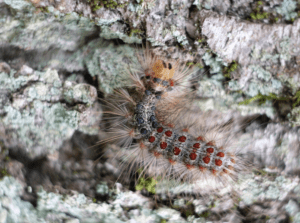

Rodents can quickly damage property and spread disease or bacteria throughout your home. Mice and rats are some of the worst pests to have in your home or office and below, we take a look at how you can identify these uninvited guests, ensuring you are able to keep your home, family, tenants or business safe and free from pest disturbances.
Identifying Mice
Deer Mice- These rodents typically grow to be between 2 ¾ and 4 inches long with 2 to 5 inch tails
- They usually have brownish-red fur and are bicolored with white bellies and white feet. They are also hairy and have bicolored tails that are light at the bottom and dark at the top
- They live throughout North America and are usually spotted in woodland areas
- These little rodents gravitate towards properties that are full of vegetation, wood piles and rock
- Deer mice usually have 3 - 4 litters every year but can have up to 11. Each litter has between 1 - 9 babies.
- These mice carry a variety of pathogens and are known to be the main carriers of Hantavirus.
- As the name suggests, house mice are the most common rodent found in homes across America
- Adults are between 2 ½ and 3 ½ inches long with long tails that are usually between 2 ¾ and 4 inches long
- They have short brown or gray hair and beige-colored bellies with single-colored and scaly tails
- The little creatures usually make their homes within 3 - 50 feet of food and water sources and this is why they are mostly found in crawl spaces, warehouses, kitchen crevices, barns and basements.
- They carry a variety of pathogens and are known for passing on salmonellosis and lymphocytic chorio-meningitis.
Identifying Rats
Norway Rats- These are the biggest of the rodent pests you may encounter and are prominent across North America
- Norway rats grow to between 7 and 9 ½ inches and have long 6 - 8 inch tails
- These massive rats have shaggy gray or brown fur with yellow bellies and have short ad scaly tails
- They live close to human environments and are usually found in basements, wood piles and crawl spaces
- The female Norway rats will have between 3 - 12 litters every year with 4 - 22 babies per litter
- They carry a variety of pathogens that include rat-bite fever, jaundice and salmonellosis
- Adult cotton rats are between 5 - 8 inches long with 3 - 6 ½ inch tails
- They have gray hair that is usually speckled with black and have light colored bellies
- These critters are present in both North and South America and found in areas with high vegetative cover including brush, gardens, fields and sheds
- They usually have 4 litters per year and these contain up to 7 babies each
- They carry a variety of pathogens with the most common being hantavirus
- These pesky pests are also referred to as ship rats and black rats
- They grow to be between 6 - 8 inches long and have incredibly long tails that can grow to 10 inches long
- They are black or dark brown in color and are found across the world
- As the name suggests, Roof rats prefer to nest in high areas such as roofs, rafters and attics
- They can have between 4 - 6 litters annually, with 6 - 8 babies per litter
- They carry a variety of pathogens and are known to carry rat-bite fever, salmonellosis and the plague!






